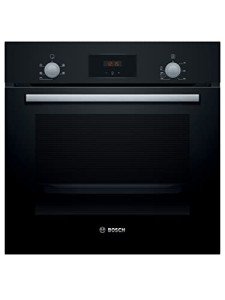10 Tell-Tale Signs You Must See To Buy A Built In Electric Oven
The Comprehensive Guide to Built-In Electric Ovens
Intro
Built-in electric ovens have become a staple in modern cooking areas, merging benefit with performance while enhancing the general visual of cooking areas. Unlike standard freestanding designs, built-in ovens are integrated into kitchen cabinetry, using a streamlined and smooth look. In this article, we will explore the different elements of built-in electric ovens, including their benefits, functions, setup factors to consider, and maintenance ideas. In addition, some regularly asked concerns will be addressed to supply a detailed understanding of this kitchen home appliance.
- * *
Tabulation
- What is a Built-In Electric Oven?
- Benefits of Built-In Electric Ovens
- Key Features to Consider
- Installation Guidelines
- Upkeep and Care
- Often Asked Questions (FAQs)
- Conclusion
- * *
1. What is a Built-In Electric Oven?
A built-in electric oven is a type of cooking device that is designed to be set up straight into kitchen cabinetry. gas hob electric oven built-in runs using electrical energy and can be incorporated into wall systems or underneath the counter top. This kind of oven uses flexibility in style and can be combined with other appliances to develop a cohesive kitchen design.
2. Advantages of Built-In Electric Ovens
Built-in electric ovens come with numerous advantages that make them a popular choice among house owners and chefs alike. Here are some essential advantages:
- Space-saving Design: Built-in ovens maximize countertop area, developing a less cluttered kitchen environment.
- Visual Appeal: They supply a more refined look, permitting for modification with cabinets, which can raise the total style of the kitchen.
- Enhanced Accessibility: These ovens are frequently installed at eye level, making it simpler to inspect food without flexing down and decreasing the threat of spills.
- Versatile Cooking Options: Many built-in electric ovens come with numerous cooking functions such as baking, broiling, and convection settings for versatility.
- Energy Efficiency: Electric ovens tend to be more energy-efficient than gas designs, making them an eco-friendly option for the home.
3. Secret Features to Consider
When selecting a built-in electric oven, it is essential to examine different features to ensure it satisfies cooking needs. Here are some functions to look for:
- Capacity: Choose an oven size that fits your household's cooking requirements; capabilities normally range from 24 to 30 inches.
- Convection Settings: Convection ovens utilize a fan to circulate hot air, promoting even cooking and browning.
- Self-Cleaning Options: Many contemporary ovens included self-cleaning capabilities, saving time and effort.
- Smart Technology: Some built-in electric ovens boast wise functionalities, enabling users to control settings by means of smart device apps.
- Numerous Racks: Check if the oven has adjustable racks to accommodate various sizes of cookware.
Feature
Description
Size
Ranges from 24 to 30 inches
Self-Cleaning Option
Yes/No
Convection Feature
Yes/No
Smart Technology
Yes/No
Variety of Racks
Adjustable racks for varied cooking needs
4. Setup Guidelines
Installing a built-in electric oven requires mindful factor to consider and preparation. Here are some actions to follow throughout the setup process:
- Measure the Space: Ensure that the oven will suit the designated cabinet requirements, thinking about any extra clearance required for ventilation.
- Electric outlet: Verify that an appropriate electric outlet is readily available near the setup site, as most built-in electric ovens require a dedicated 240-volt circuit.
- Level the Oven: A level setup is critical to ensure even cooking. Use adjustable legs or spacers to assist in leveling the oven.
- Secure the Oven: Once placed in the cabinet, secure the oven according to the producer's guidelines to prevent motion throughout usage.
- Test Functionality: Before finalizing the setup, test the oven to ensure it runs efficiently and safely.
5. Upkeep and Care
Appropriate maintenance is essential for making sure the longevity and effectiveness of a built-in electric oven. Here are some maintenance tips:
- Regular Cleaning: Wipe down the exterior and interior of the oven after each use; for self-cleaning designs, follow the producer's guidelines.
- Check Seals and Gaskets: Inspect oven door seals for wear and tear, as reliable seals prevent heat loss and energy waste.
- Calibrate the Oven: If food is regularly overcooking or undercooking, consider recalibrating the oven temperature level according to the user manual.
- Arranged Servicing: It is advisable to have the oven serviced by a professional service technician annually to guarantee it stays in great working condition.
6. Frequently Asked Questions (FAQs)
Q1: Do built-in electric ovens need special installation?
- Yes, built-in electric ovens require expert setup to guarantee they are safely integrated into cabinetry and linked to the electrical system.
Q2: Can built-in electric ovens be used for numerous cooking strategies?
- Yes, lots of modern built-in electric ovens offer various cooking techniques, including baking, roasting, broiling, and convection cooking.
Q3: Are built-in electric ovens more energy-efficient than traditional models?
- Typically, electric ovens can be more energy-efficient than gas varieties, especially with features like self-cleaning and convection cooking.
Q4: How typically should I clean my built-in electric oven?
- It is recommended to clean up the oven frequently and to use the self-cleaning function (if readily available) a minimum of every couple of months based on use.
7. Conclusion
Built-in electric ovens are an advanced addition to any kitchen, integrating performance with style. With their numerous functions, energy efficiency, and sleek design, they can considerably enhance both the cooking experience and the total kitchen aesthetic appeals. By comprehending their benefits, installation requirements, and maintenance requirements, homeowners can make educated choices when investing in this vital kitchen home appliance.
- * *
Incorporating a built-in electric oven into your kitchen can be a transformative option – one that elevates both the cooking experience and the appeal of the kitchen area.
